How to Lower Nitrate Levels in Freshwater Aquarium

Do you know how to fix nitrate levels in your fish tank, and why you should bother to do so? Although most fish keepers understand the lethal effects of ammonia and nitrites, safe nitrate levels in aquarium water are often overlooked. However, if nitrate levels are allowed to become too high, your fish and other tank residents will suffer.
High levels of nitrates can be a problem in an aquarium when regulrear water changes and other maintenance tasks are neglected. So, do you know what nitrate level is too high? And can you recognize the signs of nitrate poisoning in freshwater fish?
In this guide, we answer those crucial questions, and we show you how to lower nitrates in your aquarium.
Where Does Nitrate Come From?
Nitrate is produced as a by-product at the end of the nitrogen cycle, and no matter how diligently you maintain your fish tank, there's always a certain amount of nitrate present in the water. Did you know that clean tap water contains nitrate? Well, it does, and the amount varies depending on where you live.
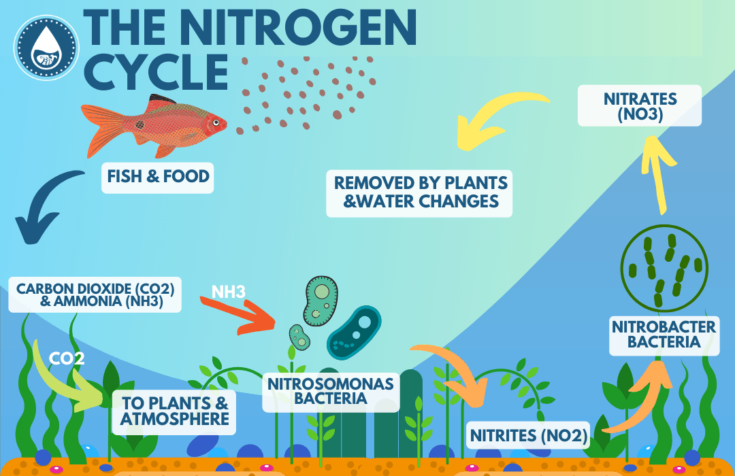
I couldn't understand why my aquariums were still showing nitrate levels of 20 ppm (parts per million) right after partial water changes and thorough vacuuming. So, I tested my tap water, only to discover that it contains nitrates! Who knew? In the U.S., tap water can contain nitrate levels as high as 40 ppm, so if your ideal baseline level is 10 ppm, you may need to consider other sources of nitrate-free water for your tank. Nitrates are also contained in rainwater, which is why rainwater is so good for plant growers, but not such a good idea for your aquarium.
In your fish tank, nitrates are produced by decaying plant material, accumulated fish waste, decomposing fish food, and general detritus. Also, if filter media is not maintained correctly, the bacteria it contains cannot cope with the burden, so nitrate levels increase.
Safe Nitrate Levels In The Aquarium
In the natural environment, nitrate levels in the water are generally very low, typically below 5 ppm. However, in the closed habitat of a fish tank, nitrate levels can quickly rise to levels that are dangerous for your fish.
Saltwater Tank Nitrate Levels
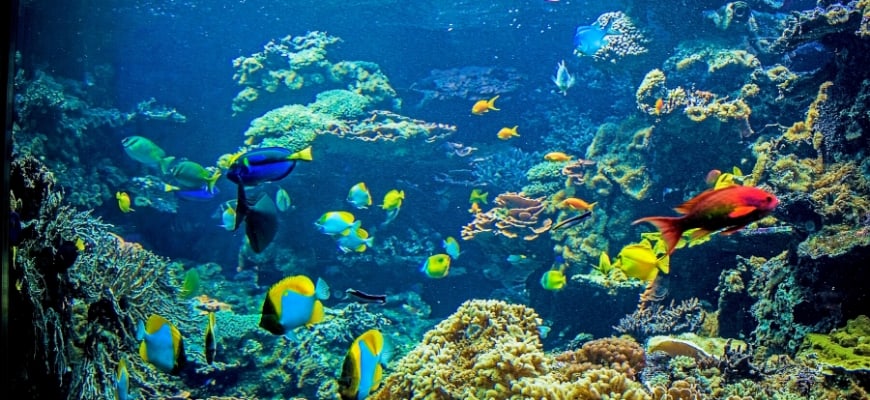
In saltwater fish tanks, nitrates are very detrimental for invertebrates and corals and must, therefore, be kept at very low levels, ideally below 5 ppm. However, marine fish can tolerate higher nitrate levels of up to 40 ppm, giving you a little more leeway if you have a fish-only setup.
Problems can occur in marine setups, as frequent water changes that are designed to lower the nitrate levels mean that more salt must be added to the tank. Consequently, some fishkeepers only top up their tank with freshwater to replace what's lost through evaporation. That doesn't reduce the nitrate in the tank water, allowing nitrates to gradually rise to problematic levels.
Freshwater Tank Nitrate Levels
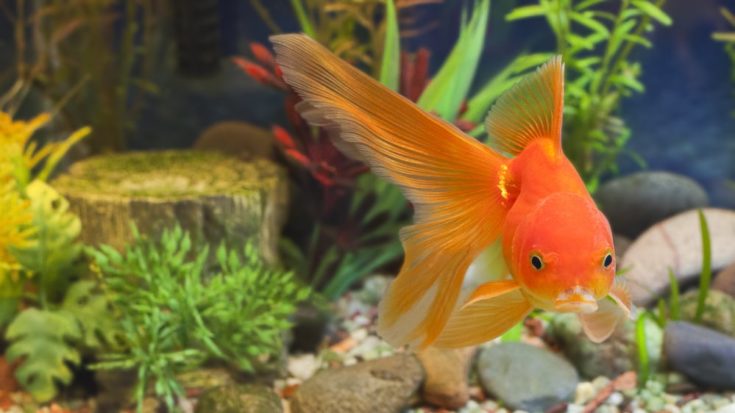
In a freshwater aquarium, the level of nitrates in the water should be below 25 ppm, and certainly no higher than 50 ppm. If you're raising fry or attempting to control the growth of algae, the nitrate level should ideally be below 10 ppm.
How Do You Test For Nitrates?
Monthly testing of your aquarium water for nitrate concentration is absolutely essential!
In new tanks, levels of ammonia, nitrite, and nitrate can quickly rise if the tank has not been fully cycled, and you need to check the levels regularly to monitor whether the cycle has completed successfully. If you have an established tank, testing the water is a crucial part of your routine aquarium maintenance regimen, and you should always have a test kit on hand.
If you can't afford a test kit, ask your local fish store what they charge for water testing. Some larger stores will test your tank water for free, or they may charge a nominal monthly fee that often works out cheaper in the long run than buying test kits.
The Testing Process
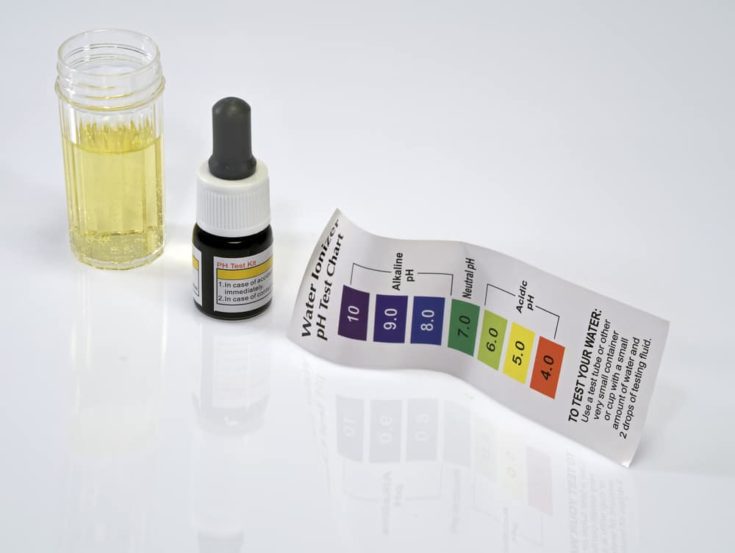
Nitrate testing kits all work in a similar way.
Test kits generally come in two forms; liquid or paper strips. You can buy master test kits that include tests for water pH and hardness levels, as well as for ammonia, nitrites, and nitrates, although you often don't use some of the tests, and it can work out cheaper to buy individual test kits for specific things, such as nitrates.
Paper Strip Tests
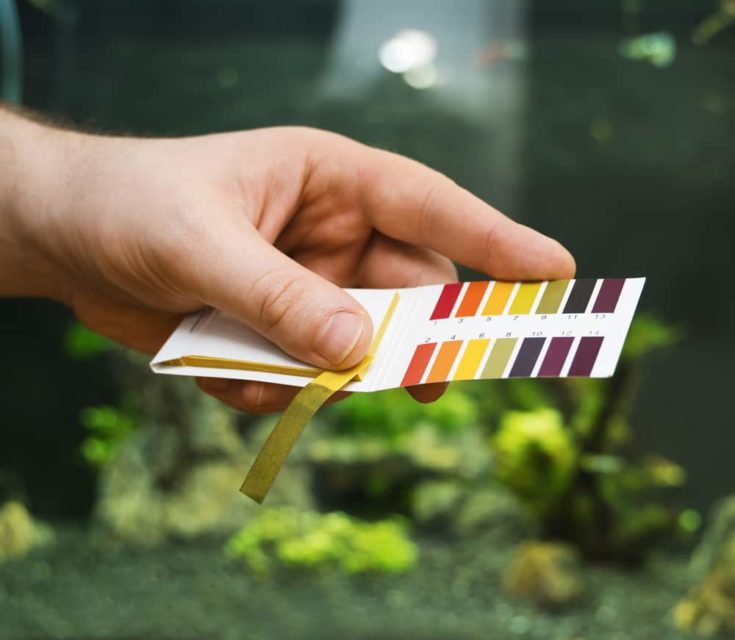
Paper strip tests are easy to use and cheap to buy. You take a sample of tank water and dip one of the paper test strips into it. Wait a few minutes, and then compare the color of the strip with the color chart that's provided with the test kit. The color of the strip tells you approximately how much nitrate is contained in the water sample that you used.
Liquid Tests
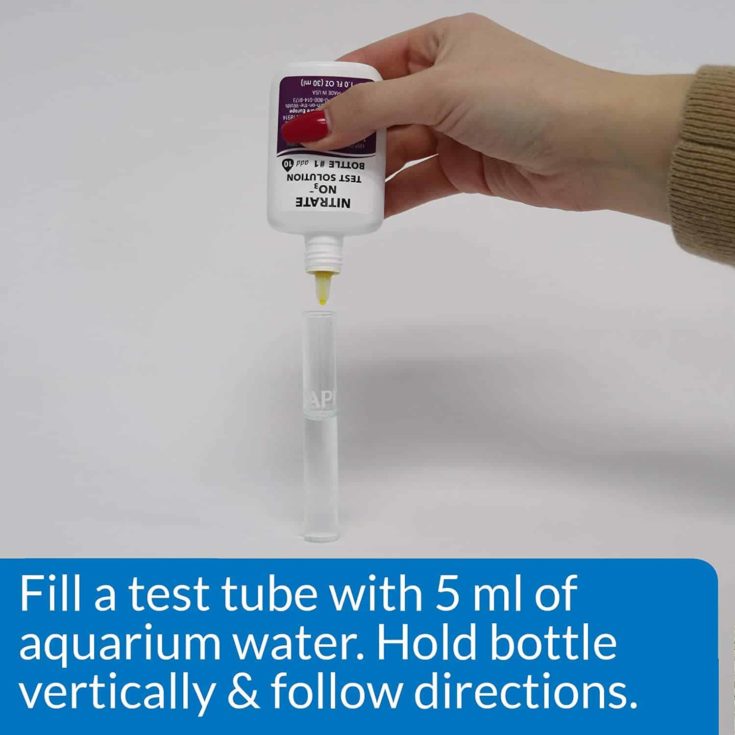
Liquid test kits are generally preferred to paper strips, as they are widely considered by hobbyists to be more accurate, provided that you follow the manufacturer's instructions. The test kit comes with a small test tube, a pipette, a vial of a liquid testing medium, and a color chart. You place some tank water in the test tube, add a few drops of testing fluid, shake the tube to combine the contents, and then wait a few minutes for the test to work. The water in the tube changes color, indicating the concentration of nitrate in the water sample.
I always test my tap water too, so that I can see how much nitrate it contains, compared with the nitrate levels in my tank water. So, if the tap water contains 20 ppm of nitrate and my tank water has 25 ppm nitrate, then I know that the tank is pretty clean. If the tank water has 40 ppm nitrate, then I know that I have work to do!
The Potential Dangers Of Excess Nitrate Levels
Excessive levels of nitrate can have detrimental effects on life in your aquarium.
Fish
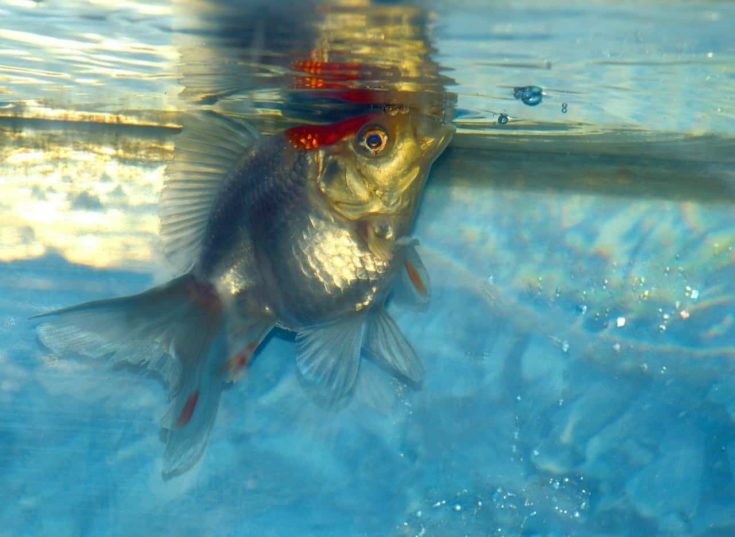
In freshwater and marine tanks, your fish will begin to be adversely affected when nitrate levels reach 100 ppm, especially if you don't take action to correct that. Fish suffer from stress, making them more susceptible to disease and attack by parasites and interfering with reproduction. Juvenile fish and fry will not grow properly, and many will die.
Also, high levels of nitrate are also associated with poorly oxygenated water, which will cause further stress to your fish.
When choosing fish to add to your tank, always check the nitrate values for the species, as tolerance levels vary. Test your tank water to make sure that any new fish will be happy with the water parameters, and ask the fish store to test their water too so that you can see that the numbers are close before making your purchase. That way, the chances of the fish suffering from nitrate shock or nitrate poisoning are greatly reduced.
Algae And Plants
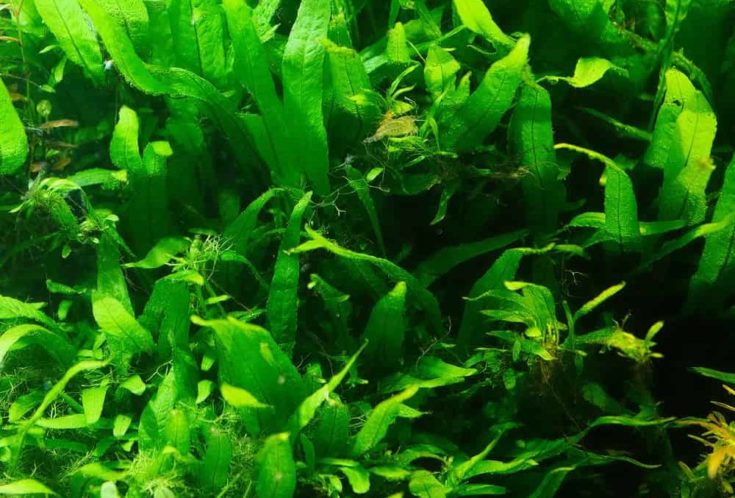
If you are struggling to control algae in your aquarium, that could be down to high levels of nitrates, as the two are linked. Nitrate levels of just 10 ppm will encourage algae to grow, and the algal blooms that you see in new setups are often caused by poor tank cycling and consequently, high nitrate concentration.
Plants use nitrate as an important source of nutrition; however, if the levels in the water increase too quickly, your plants will become covered with algae and will ultimately suffocate and die.
Nitrate Poisoning Vs. Nitrate Shock
Excessive amounts of nitrates in the aquarium can result in catastrophic harm to your livestock. There are two forms of nitrate toxicity:
Nitrate Poisoning
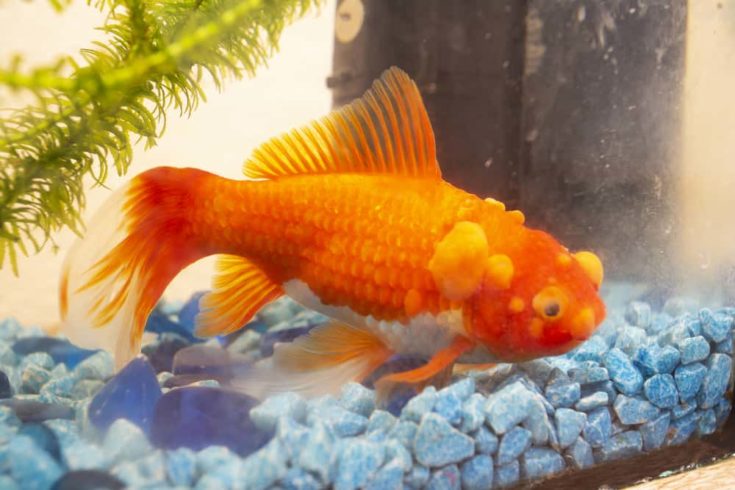
Nitrate poisoning is a chronic problem that occurs when nitrate levels increase gradually over a period of weeks. The problem is usually due to poor tank maintenance, overstocking, overfeeding, or a combination of all three.
The effect of nitrate poisoning is generally fish death, with juvenile fish and marines being affected by comparatively low levels of nitrate in the water. In cases of nitrate poisoning, often just one or two fish are initially affected. If you don't test the water, the cause of the fishes' sickness can be overlooked, until more fish succumb and eventually fish death begins to occur.
Depending on the fish species, death may not happen for a few days to a few weeks.
Nitrate Shock
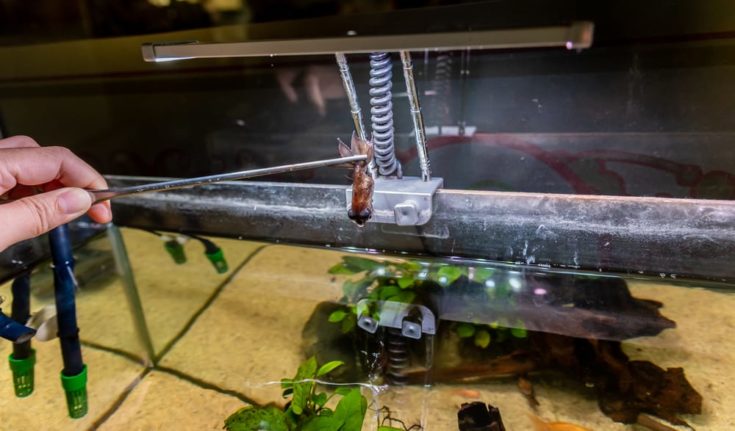
Nitrate shock is the term that's used to describe the sudden exposure of fish to a high concentration of nitrate. However, the same condition can occur if fish are exposed to a sudden, dramatic decrease in nitrate levels.
Nitrate shock usually causes fish to die within 24 hours, and most times, owners are unaware of the problem until it's too late. Nitrate shock usually occurs when new fish are introduced to a tank that already has extremely high nitrate levels. The fish are shocked by the poor water quality, even though existing residents are unaffected, having become gradually conditioned to their environment over time.
You can also cause nitrate shock by carrying out major water changes to an established tank that has very high levels of nitrate, as the sudden fall in nitrate levels will shock your fish.
Symptoms Of Nitrate Poisoning In Fish
The following symptoms can indicate a nitrate problem in your aquarium:
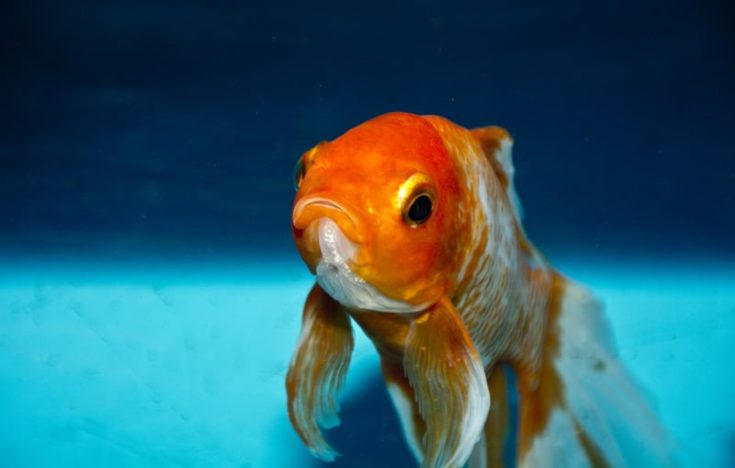
- Lethargy, including laying on the substrate
- Poor appetite and rejection of food
- Rapid breathing rate and gill movement
- Disorientation and inability to swim properly
In advanced cases of nitrate poisoning, fish may curl up from their head to their tail.
If you see any of these symptoms in your fish, test the water immediately to make sure that nitrate levels are within acceptable parameters for the species of fish that you have in your aquarium.
If the nitrate levels are too high, there are several things that you can do to alleviate the problem and save your fish.
Treatment Of Nitrate Poisoning
Your first action should be to reduce the levels of nitrate in the tank. However, water changes must be controlled and gradual so that you don't shock your fish as described above. For the first 24 hours of treatment, do not feed the fish. The chances are that the fish won't eat the food anyway, and uneaten food will only contaminate the water, making the problem worse.
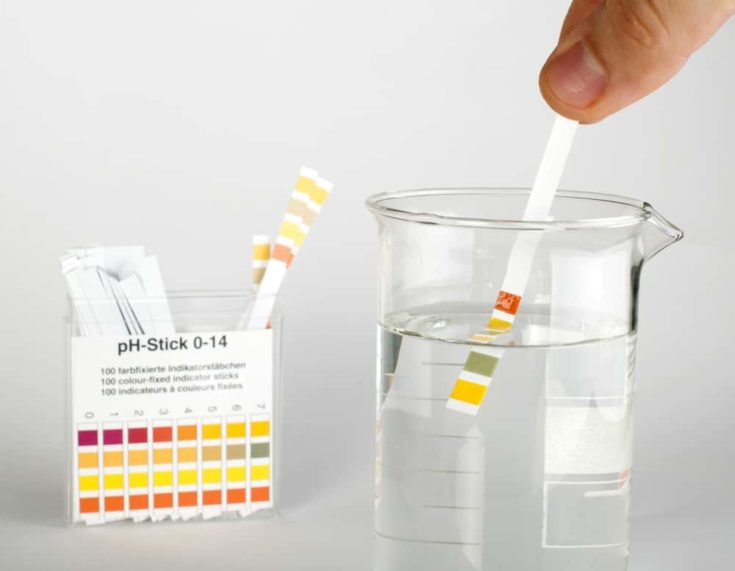
Test the tank water for nitrates. That will give you a baseline figure so that you can see how many water changes may be required.
Your target figure is below 20 ppm. However, the reduction of nitrates in the water must be made gradually, only removing up to 5% of the water every couple of hours. Continue changing that amount of water until you've replaced around half of the total water in the tank. That will bring down nitrate levels dramatically, but at a rate that won't shock the fish.
When you've finished the first round of water changes, re-test to see by how much the nitrate level has reduced. If you still have levels that are too high, you'll need to repeat the process the next day.
Contributory Factors
There are several factors that contribute to high nitrate levels in the aquarium, and understanding these is the key to preventing problems in the future.
Overfeeding
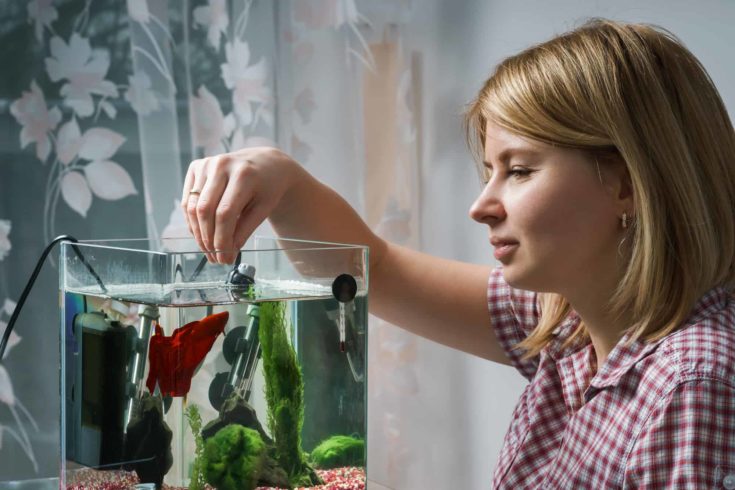
Overfeeding your fish is not good for their health. Some species, such as bettas and fancy goldfish, may suffer from conditions such as bloat and constipation if they're given too much food. The more food that the fish are given, the greater the amount of nitrate that their digestive processes produce, adding to the burden of toxins in the water and placing a strain on your biological filtration system.
Also, any uneaten food will disappear into the substrate where it gradually decomposes, polluting the water and adding to the cocktail of toxins that are present in the water.
Be sure to feed your fish the correct diet, and offer just enough food to last the fish a minute or two. Feed once or twice a day, and include one day of fasting each week to rest the fishes' digestive systems.
Overstocking
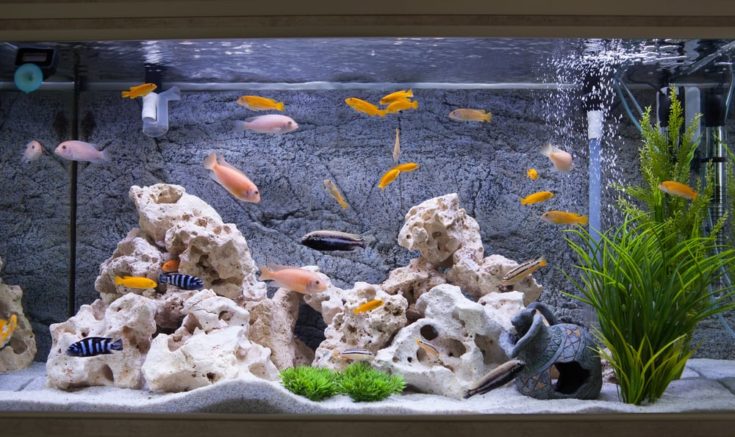
Never overstock your fish tank. The more fish you have in the tank, the more waste they will produce, and the more nitrates you will have in the water.
As a general rule of thumb, you should allow one gallon of water per one inch of fish, remembering to allow extra space for juvenile fish to grow into. Before buying new stock for your tank, check the maximum size that the fish will attain when fully mature. Also, bear in mind that some species are territorial and need more space than others. A crowded tank leads to stress, which can be exacerbated by poor water quality.
Dirty Filters
If you allow mechanical filters to become dirty and clogged with detritus, the impeller will not work properly. That may cause poor circulation of water around the tank, and pockets of foul water and high nitrates may develop.
Clean the filters at least once a month and replace carbon filter media regularly to help keep nitrate levels under control.
Decaying Plant Material
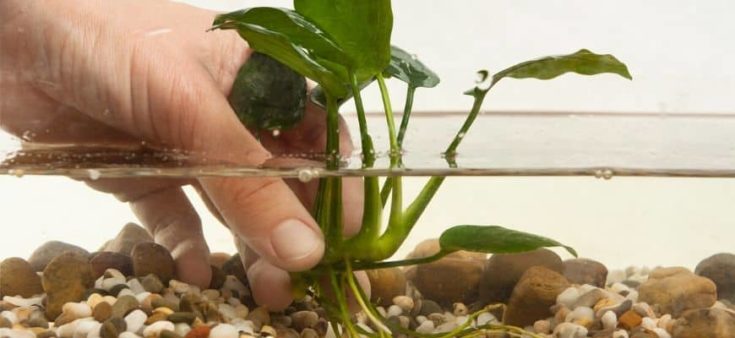
Keeping live plants in your aquarium is a great way of controlling nitrate levels, as living plants utilize nitrates as fertilizer for growth. However, you must maintain your plants and keep them tidy. Remove dead leaves and cut back excess plant growth to ensure that dead plant material does not accumulate on the bottom of the tank where it will decay, adding to the level of nitrates in the water.
How To Reduce Nitrate
There are many ways in which you can reduce and control the levels of nitrate in your aquarium:
Keep Live Plants
Keeping live plants is a very good long-term strategy for keeping nitrate levels balanced in your tank. Living plants extract nitrate from the water and utilize it as fertilizer, helping to reduce the amount of nitrate in the environment.
Keep Your Tank Clean

Keeping the aquarium clean and well-maintained is the best way to control nitrate levels. Fish waste ultimately produces nitrate, so be sure to vacuum the substrate thoroughly each week to remove detritus and leftover food that will otherwise decompose and pollute the water.
Use Nitrate-removing Filter Media
If your tank has a persistent nitrate problem, special nitrate-removing filter media can be an extremely useful tool. Such products are available online or from good aquarium stores.
Carry Out Weekly Water Changes
You should carry out partial water changes each week to keep the nitrate levels in the tank under control. However, if your local tap or well water has high nitrate levels, you might want to use DI (deionized) water or RO (reverse osmosis) water for water changes. However, both those options have no mineral content, so the water pH and hardness can change, and you may need to add a pH buffer or mineral supplement to correct the parameters to suit your fish.
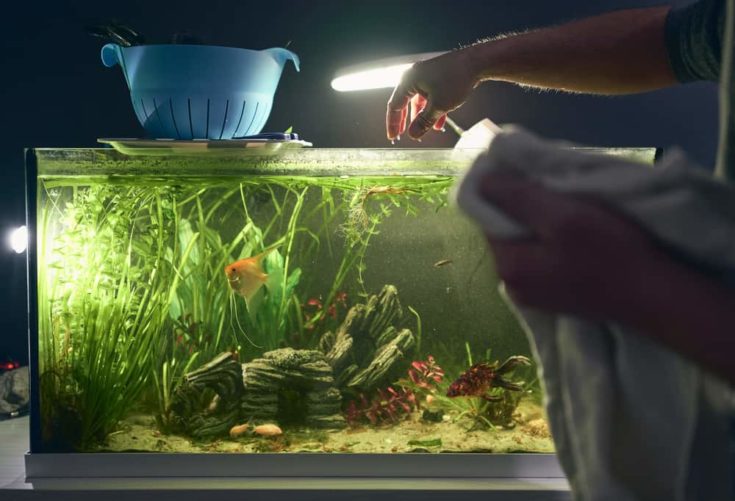
Alternatively, mix DI or RO water with tap water to create a blend that matches the water parameters you want.
Use A Denitrator Filter
Special nitrogen-removing filters called denitrators can be used if you have a problem with high nitrate levels in your tank, but these can be very expensive, and a nitrate-lowering filter media is a better option, although you will need to replace it periodically.
Install A Refugium
A refugium is basically a remote location that supports a population of wildlife. When used as part of a nitrate control strategy for marine and reef tanks, a refugium provides a separate environment in which macroalgae can be cultivated.
Macroalgae are extremely effective in removing nitrate and phosphate from the water as it passes through the refugium, reducing levels that would be harmful to your livestock. You simply periodically remove the crop of algae or seaweed and the nitrates with it.
Use Microbes
Various types of live microbes can also be used to control nitrate levels. Microbes either use nitrate for biomass or convert it into nitrogen gas that evaporates harmlessly. There are two forms of microbes; aerobic and anaerobic.
Aerobic microbes are primarily made up of heterotrophic bacteria that take up nitrates quickly but need to be "fed" some form of carbon, such as ethanol. Unfortunately, aerobic microbes can bloom, which may cause oxygen depletion in the water.
Anaerobic microbes, such as non-sulfur bacteria, are slower workers but don't require carbon dosing because they live in deep sand where organic matter is abundant.
The perfect storm for aquarium owners is to create a microbial community that is diverse and varied, which may mean the addition of a deep sand substrate, regular feeding with bacterial foods and supplements, and the use of bacterial inoculants.
In Conclusion
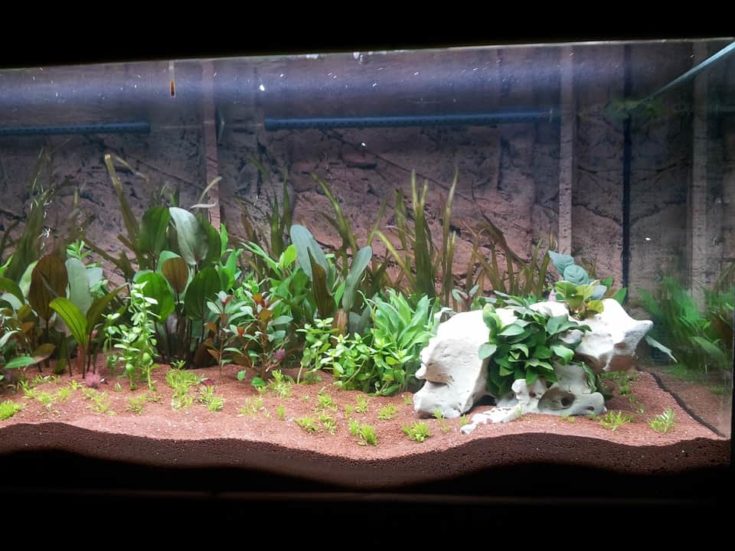
I hope you enjoyed our tips on how to deal with excess nitrates in your fish tank.
Although nitrate is not as dangerous to fish as ammonia and nitrites, excessive levels of nitrates in the aquarium can lead to poor fish health, poisoning, and shock. There are many ways in which you can prevent nitrates from accumulating in your tank, but the most effective method is to carry out regular partial water changes and keep your aquarium clean and well-maintained.
We would love to hear what you thought of our article, as well as any tips and tricks that you have for keeping nitrate levels low in your tank. Tell us your story in the comments box below, and don't forget to share our guide with your friends.
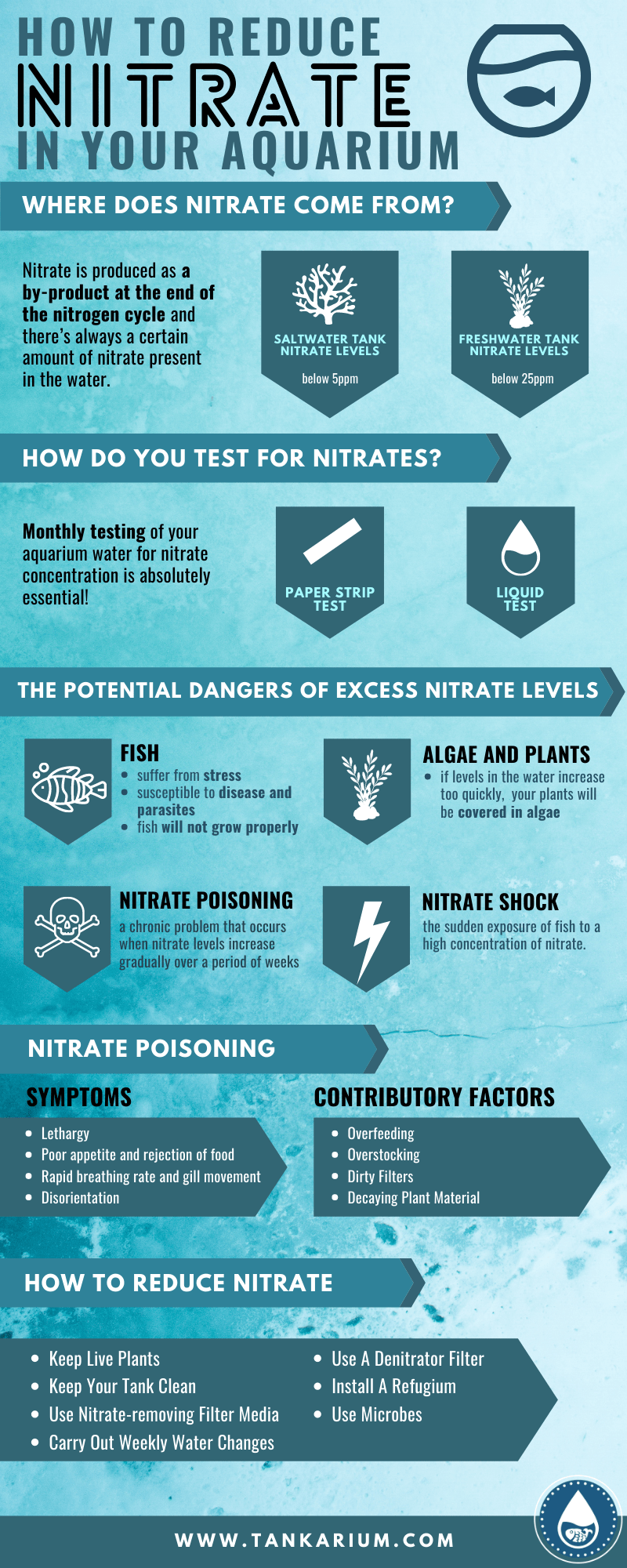
How to Lower Nitrate Levels in Freshwater Aquarium
Source: https://www.tankarium.com/lower-nitrates-in-aquarium/